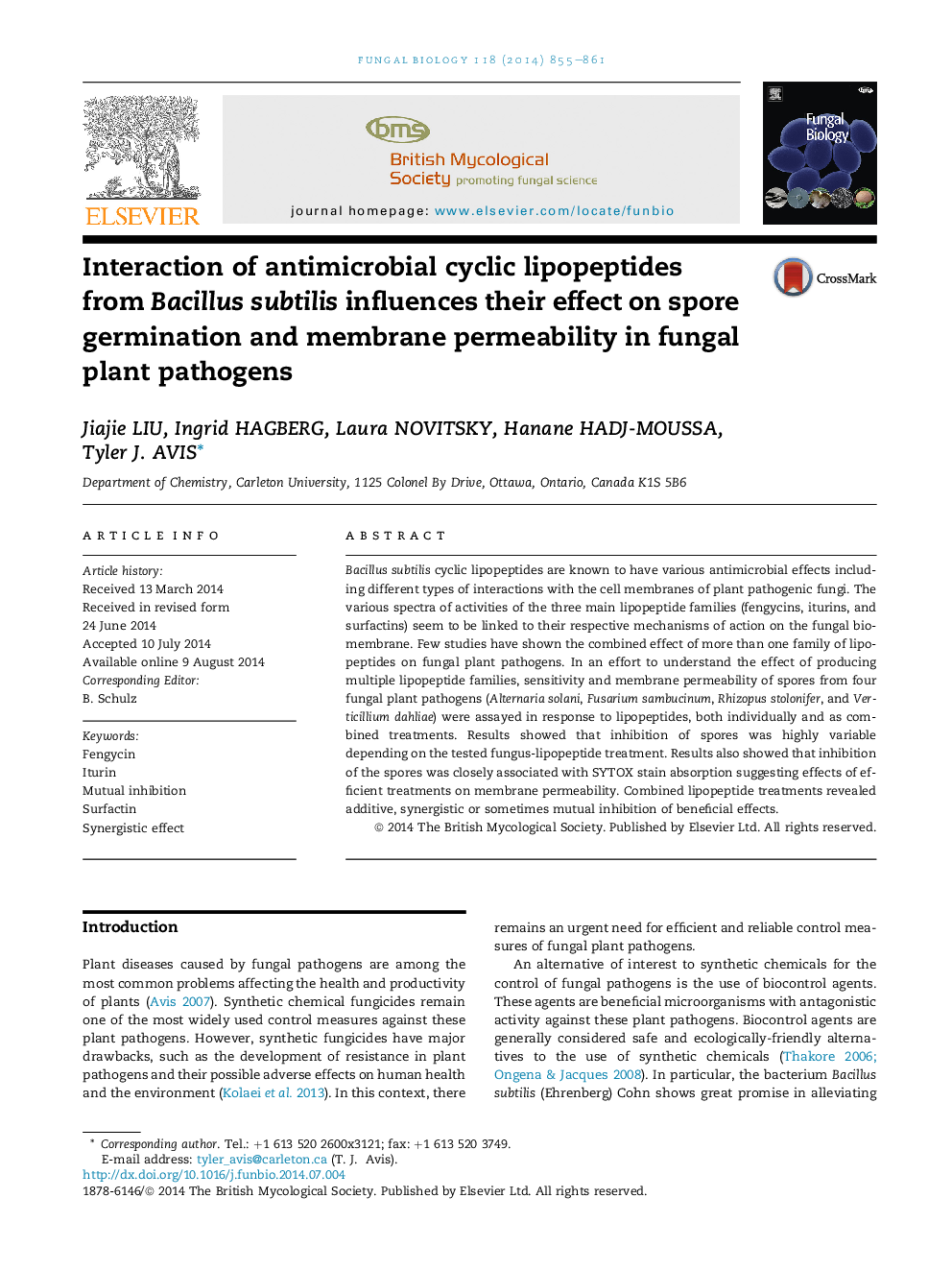| Article ID | Journal | Published Year | Pages | File Type |
|---|---|---|---|---|
| 4357002 | Fungal Biology | 2014 | 7 Pages |
•Bacillus subtilis cyclic lipopeptides inhibited spores of fungal plant pathogens.•Inhibition was variable for each fungus-lipopeptide treatment.•Combined lipopeptide treatments revealed additive, synergistic or sometimes mutual inhibition of beneficial effects.•Efficient inhibition of fungal spores was closely associated with increased cell membrane permeability.
Bacillus subtilis cyclic lipopeptides are known to have various antimicrobial effects including different types of interactions with the cell membranes of plant pathogenic fungi. The various spectra of activities of the three main lipopeptide families (fengycins, iturins, and surfactins) seem to be linked to their respective mechanisms of action on the fungal biomembrane. Few studies have shown the combined effect of more than one family of lipopeptides on fungal plant pathogens. In an effort to understand the effect of producing multiple lipopeptide families, sensitivity and membrane permeability of spores from four fungal plant pathogens (Alternaria solani, Fusarium sambucinum, Rhizopus stolonifer, and Verticillium dahliae) were assayed in response to lipopeptides, both individually and as combined treatments. Results showed that inhibition of spores was highly variable depending on the tested fungus-lipopeptide treatment. Results also showed that inhibition of the spores was closely associated with SYTOX stain absorption suggesting effects of efficient treatments on membrane permeability. Combined lipopeptide treatments revealed additive, synergistic or sometimes mutual inhibition of beneficial effects.
